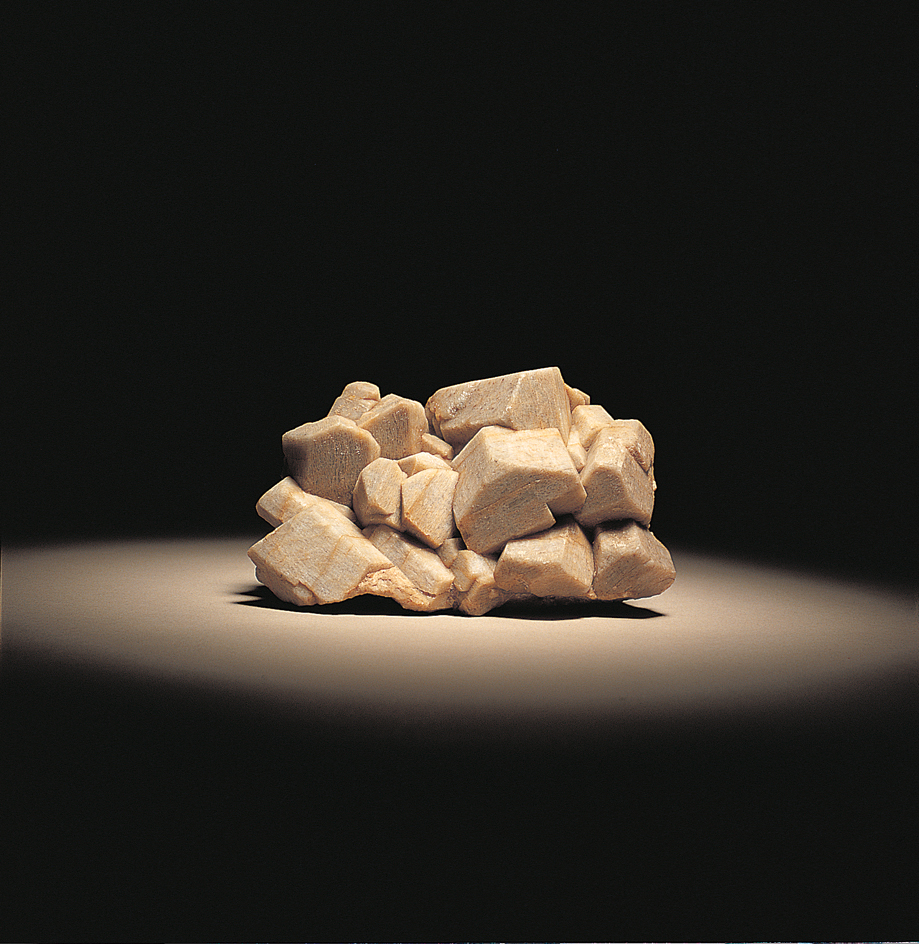Feldspar is the name of a group of minerals that make up about 60 per cent of the earth’s crust. Feldspars occur in most igneous rocks and in many metamorphic and sedimentary rocks (see Rock). Extremely large feldspar crystals are found in a coarse-grained igneous rock called pegmatite. Feldspars rank among the hard minerals (see Hardness). Feldspars range in color from clear white or gray to shades of blue, green, or pink.
All feldspars contain alumina and silica. Feldspars may be classified into two general groups, alkali feldspars and plagioclase feldspars, according to the other elements they contain. All alkali feldspars contain potassium and most contain sodium. The most common minerals in this group are microcline, orthoclase, and sanidine. Most plagioclase feldspars, such as andesine and labradorite, contain both sodium and calcium. Some feldspar crystals, called perthites, consist of alkali and plagioclase feldspars.

Feldspar is used in making glass and ceramics. Feldspar crystals of especially beautiful color and luster may be used as gemstones, ornaments, and architectural decorations. The most popular of these crystals are moonstone (milky-white perthite), Amazon stone (green microcline), and labradorite, which is iridescent (displaying changing colors).
A process called weathering changes feldspars into other minerals, chiefly clay minerals and salts. Kaolin, the most important of these clay minerals, is used in making fine chinaware. Clay formed from feldspar is also used as a coating and filler in the production of paper.
